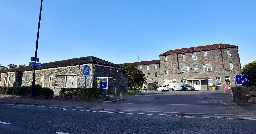More than 4,500 bodies discovered in unmarked mass grave in Bristol
More than 4,500 bodies discovered in unmarked mass grave in Bristol
The shocking discovery was made by archaeologists excavating the site of one of the city's most notorious workhouses

The graves of more than 4,500 people have been discovered in the grounds of a historic building on the edge of Bristol, which archaeologists say reflects a ‘dark chapter’ in the city’s history.
The remains were unearthed over five years in a dig at the site of the former Blackberry Hill Hospital in Stapleton in Bristol, and revealed in a report released this week by the archaeologists.
Cotswold Archaeology were commissioned by developers Vistry, who are developing the site for housing, to investigate the historic site, which has had many roles in the city’s history.
And now, having completed the first part of the archeological excavation, and analysed the findings, Cotswold Archaeology have now reported back to Vistry what they found - and the results are stunning.
The site was first developed in the late 1700s, when Stapleton Prison was built there. Over the next few decades, it housed prisoners of war from Britain’s conflicts with France, Spain, Holland and the US, but as Bristol grew and the conflicts ended, a new need was more pressing - as a hospital. Its location on the edge of the city meant it was converted into a hospital during the 1832 cholera outbreak, but within five years had been converted again into the Stapleton Workhouse.
From then until the early 20th century, the workhouse was where the poor, destitute, sick and anyone who couldn’t look after themselves were sent, and very often they died there, and were buried in unmarked graves - which have now been discovered, more than 100 years later.
“One of the most striking elements of the excavation is the discovery of more than 4,500 graves,” said Rosanna Price, Cotswold Archaeology’s engagement manager. “These primarily date from the workhouse period, from 1837 to the late 19th century. Some burials may even date back to the site’s earlier function as a prisoner-of-war camp.